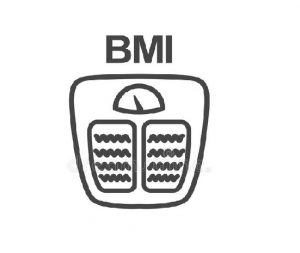BMI, or Body Mass Index, is a common measure of whether you should consider a weight loss program. It’s a shorthand figure that is designed to give you a quick and easy picture of your weight and how that stacks up to your ideal weight. BMI is a great quick tool to determine whether your weight is healthy, and it’s actually very easy to calculate.
The Basic BMI Calculation
The basic calculation for BMI is very simple: it’s your weight divided by your height, squared. The original BMI formula was designed in metric, using kilograms divided by meters, giving a number with the units kg/m2. A meter is about three feet. For most Americans, it’s much easier to calculate BMI using units we’re used to, such as pounds and inches. If you do the calculation with these units, you divide the weight by height squared, then multiply the answer by 703.
Once you have the number, compare it to the following table:
-
Underweight <18.5
-
Normal Weight 18.5-24.9
-
Overweight 25-29.9
-
Obese: 30 or greater
This will give you a simple picture of how your weight compares to a healthy weight.
Is BMI a Good Indicator of Health?
BMI is considered a reliable tool only for adults age 20 and older, but for that group, it has proven to be a robust tool for analyzing fatness levels in the population. However, there are some corrections that need to be taken into account:
-
At a given BMI, women tend to have more fat than men
-
As we age, we tend to have more fat for the same BMI
-
Athletes and others who train regularly and hard tend to have less fat for their BMI
Because of these and other factors, BMI should not be taken as a comprehensive statement on your overall health.
There are a few other things you can test quickly to understand your fat-related health risk. Measure your waist circumference with a tape measure. If you are a woman with a waist over 35 inches or a man with a waist over 40 inches, you are at elevated risk for health problems. Blood pressure is also a good indicator of health risk. Finally, take into account your level of activity. Lower activity leads to higher risk.
If you want help improving your BMI, waist circumference, or other measures of your health, please contact Med-Fit Medical Weight Loss Clinic in Denver.

